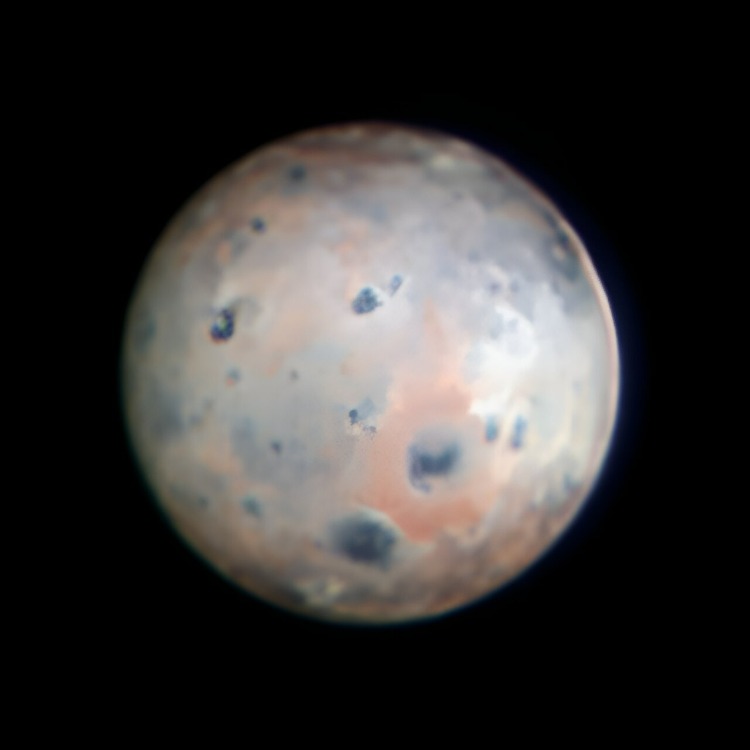Astronomers have captured the most detailed images of Io, Jupiter's volcanic moon, using the Large Binocular Telescope on Mount Graham in Arizona. The unprecedented resolution of these images, made possible by the SHARK-VIS instrument and adaptive optics system, reveals surface features as small as 50 miles across – a feat previously only achievable with spacecraft.
These high-definition images, published in Geophysical Research Letters, offer a glimpse into Io's intense volcanic activity, which dwarfs that of Earth. The observations have helped scientists identify a significant resurfacing event around Pele, one of Io's most prominent volcanoes.
 source: phys.org
source: phys.org
Io, the innermost of Jupiter's Galilean moons, is locked in a gravitational tug-of-war that generates internal heat, fueling its widespread volcanic activity. By studying Io's eruptions, researchers hope to gain insights into the moon's internal structure and the tidal heating mechanism driving its volcanism.
The new images, rich in detail, have allowed scientists to observe changes in Io's surface, including the covering of Pele's plume deposit by eruption deposits from neighbouring volcano Pillan Patera. This level of detail was previously impossible to observe from Earth.
The SHARK-VIS instrument, built by the Italian National Institute for Astrophysics, uses a fast, ultra-low-noise camera and advanced data processing techniques to capture high-resolution images. The instrument has the potential to observe surfaces of various solar system bodies, including asteroids, and has already collected data on some of these objects.
This groundbreaking research offers a unique opportunity to explore the mighty eruptions that shaped the surfaces of Earth and the moon in the distant past, and may someday shed light on volcanic worlds in exoplanet systems.



